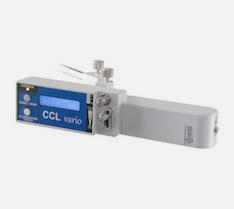
We perform UV cross linking in an outpatient procedure with local anesthesia by means of eye drops. To enable the Riboflavin eye drops to reach the deeper corneal tissue, the eye's sealing layer of the cornea, the epithelium, is removed carefully since the Riboflavin does not penetrate the epithelium.
Subsequently, the Riboflavin solution is dripped onto the cornea until it is well-saturated. Finally, we are treating the cornea for 5 minutes with UV-A light, with the intensity chosen in such a manner that the radiation does not reach the eye structures situated below the cornea. At the end of the operation, an occlusive lens is placed on the cornea: It will remain in the eye for some days until the epithelium has regenerated itself. Only then, it will be removed.

